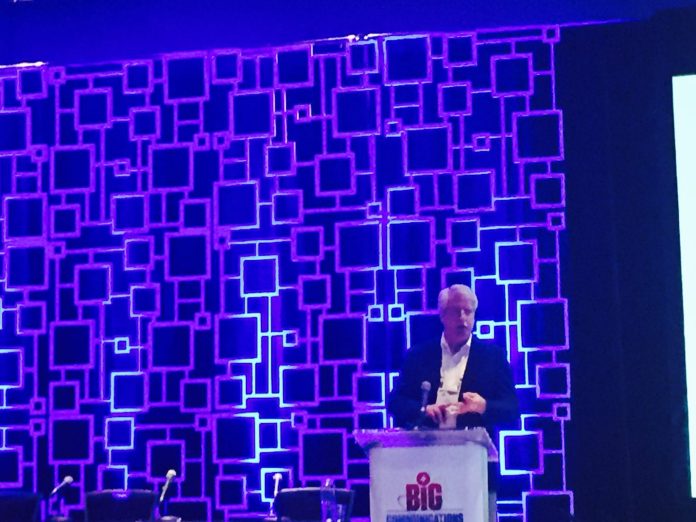‘Highly flexible RAN design’ will be necessary for 5G
AUSTIN, Texas — Dave Wolter, assistant VP of radio technology at AT&T Labs, highlighted the widely varying requirements needed to realize the full promise of “5G” mobile networks in a presentation Monday, asking: “Can it do the splits?”
During a keynote address at the Alliance for Telecommunications Industry Solutions event, Wolter discussed how 5G will support very different use cases, ranging from “Internet of Things” deployments that don’t require much throughput to data-intensive tasks like autonomous driving, all in one network.
“These have different requirements,” Wolter said. In addition to many IoT applications, “we want to be able to do things that require very low latency for real-time applications, industrial control,” for example. “I always shudder when people use the example of remote surgery. I’m not the guinea pig for that.”
Wolter continued: “It means that we need a very highly flexible RAN design,” because it’s difficult to estimate how much capacity you’ll need for different network uses. “I can’t do that accurately upfront. I need to be able to address my market in a dynamic fashion. What does this mean for the system? We’re still juggling the balls of LTE and trying to keep evolving that. We’re trying to look at all these different use cases. And we want to do that on the same radio. It’s got to be a very flexible system.”
In its 5G work, AT&T has partnered with Ericsson and Intel. The service provider is conducting experiments in the 3.4-3.6 GHz, 3.7-4.2 GHz, 14.5-15.35 GHz and 27.5-28.5 GHz bands with plans filed with the Federal Communications Commission to conduct mobile 5G tests in Austin.
Wolter addressed the need to build “forward compatibility” into 5G systems, particularly given all of the work being done “pre-standardization.”
“We’ve got to be thinking about all of the things at the same time, up front, to make sure we don’t do something that precludes that flexibility and that forward compatibility,” Wolter said. “That’s my main message today. It’s easy to get very focused and solve a problem, but do it in a way that just isn’t flexible enough.”
Specifically, Wolter divided 5G into phase 1, which he described at enhanced mobile broadband; followed by phase 2, which will enable massive multiple-input/multiple-output antenna technology and IoT applications requiring connection density and long battery life. Later in the process, high-reliability, low-latency use cases like industrial control and remote manipulation — like the remote surgery he mentioned earlier — will come to life.
Wolter supplied a list of “5G industry expectations” including:
- Multigigabit speeds and high capacity.
- Connectionless massive IoT.
- Ultra-low latency and high reliability.
- Sub-6 GHz for wide-area coverage with improved spectral efficiency.
- Flexible, lean carrier design.
- Multiple types of radio access technologies using sub-6 GHz, millimeter waves and unlicensed bands simultaneously.
- Massive MIMO.
- Densification with self-backhaul.
- Software-defined networking/network functions virtualization-based architecture.
Specific to millimeter waves, Wolter identified new propagation characteristics, extremely wide channels, new channel models, new interference analysis, coordination and mitigation, and channel sounding around the world as areas that require more work.

